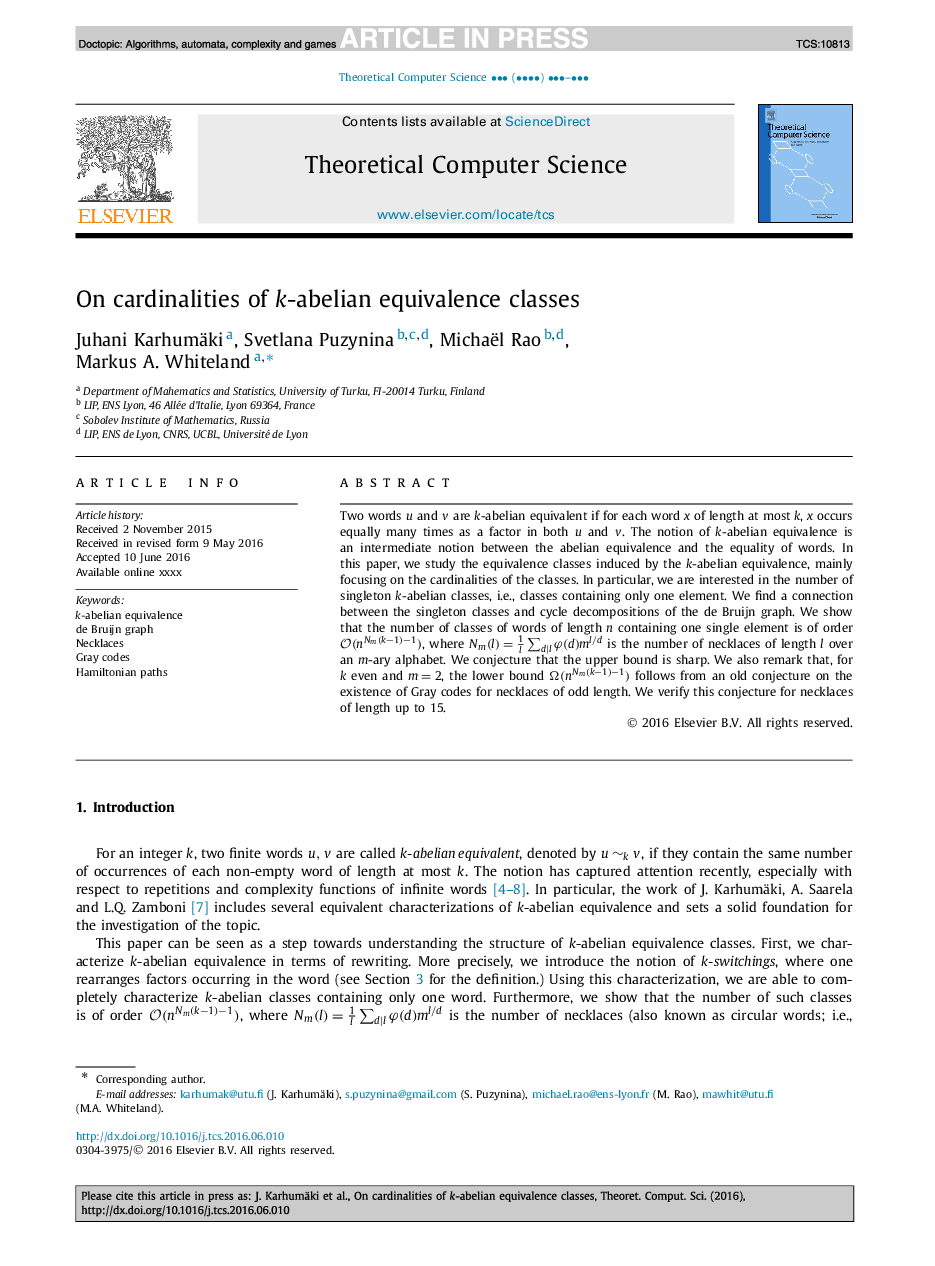| Article ID | Journal | Published Year | Pages | File Type |
|---|---|---|---|---|
| 4952299 | Theoretical Computer Science | 2017 | 15 Pages |
Abstract
Two words u and v are k-abelian equivalent if for each word x of length at most k, x occurs equally many times as a factor in both u and v. The notion of k-abelian equivalence is an intermediate notion between the abelian equivalence and the equality of words. In this paper, we study the equivalence classes induced by the k-abelian equivalence, mainly focusing on the cardinalities of the classes. In particular, we are interested in the number of singleton k-abelian classes, i.e., classes containing only one element. We find a connection between the singleton classes and cycle decompositions of the de Bruijn graph. We show that the number of classes of words of length n containing one single element is of order O(nNm(kâ1)â1), where Nm(l)=1lâd|lÏ(d)ml/d is the number of necklaces of length l over an m-ary alphabet. We conjecture that the upper bound is sharp. We also remark that, for k even and m=2, the lower bound Ω(nNm(kâ1)â1) follows from an old conjecture on the existence of Gray codes for necklaces of odd length. We verify this conjecture for necklaces of length up to 15.
Related Topics
Physical Sciences and Engineering
Computer Science
Computational Theory and Mathematics
Authors
Juhani Karhumäki, Svetlana Puzynina, Michaël Rao, Markus A. Whiteland,
